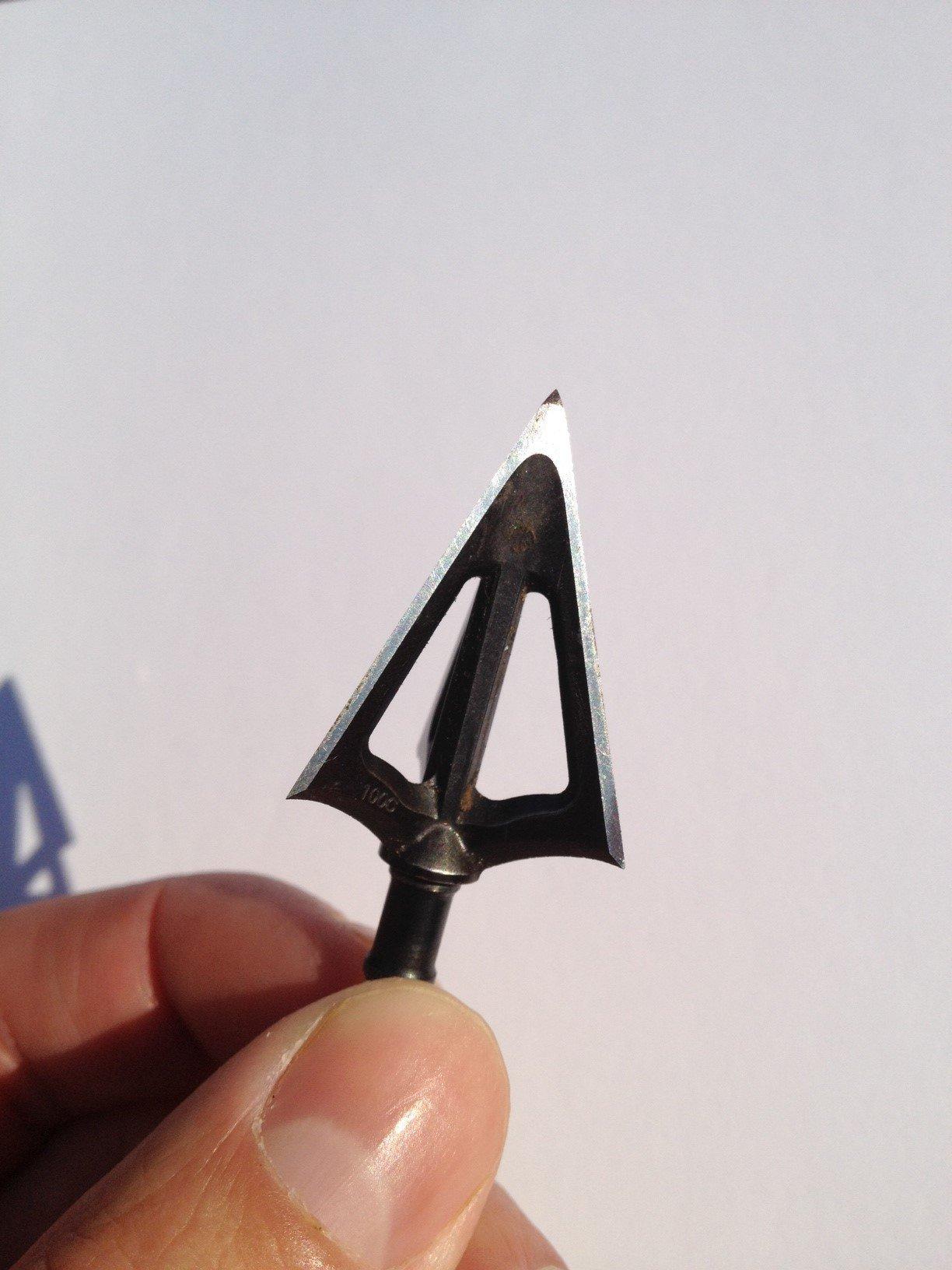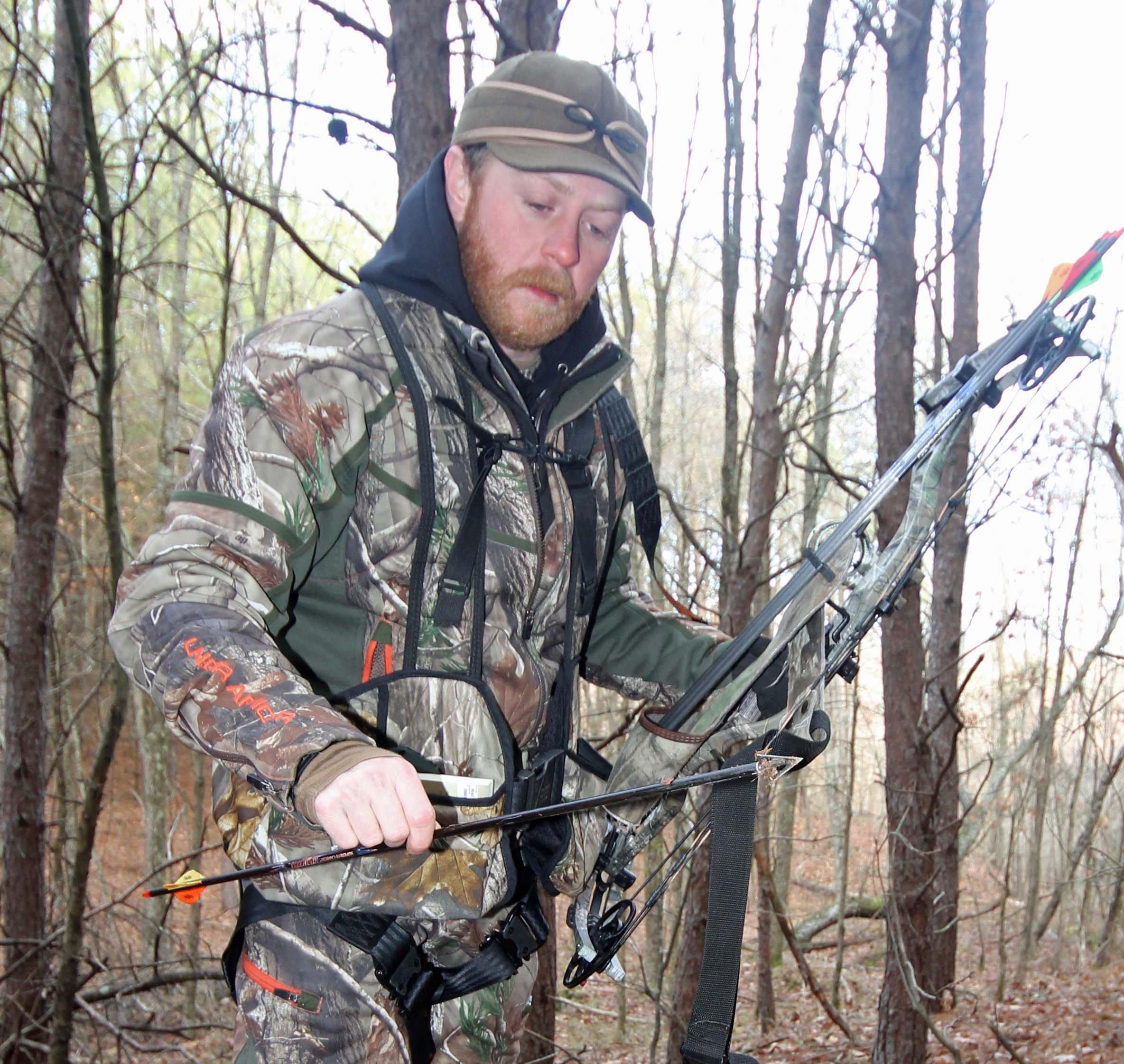Why I Like the G5 Montec

No, a Montec is a homely little piece of stainless steel. It's a well-machined piece of stainless steel, though. And pricey at $40 for a three-pack. But I view them as an investment. Unless you actually lose them, you can shoot them for a good long while and through a good many critters. I like that. Some bowhunters live for quality. I like quantity.
Case in point: I bought a package of three Montecs last season. But I really only used one of them. With that single broadhead, I killed two does and a buck. I killed one fall turkey, and missed another. I shot a coyote that stunk up my hunting area for the remainder of the day, and a hog down in Florida. Later in the year, I loaned my bow to my buddy Miles during a late-season hunt. He killed another deer with that broadhead.
That's eight field shots in a season's time, and in every instance, I washed the funk off the blades, resharpened them, and was ready to go again. I'm not really superstitious, but I've come to like that broadhead, and so I'll probably keep grabbing it from my quiver until I lose it. I doubt I'll break it.

Sure, the initial cost may be less expensive with a replaceable-blade broadhead. I can buy six new Muzzys for less than three new Montecs. But when you actually get into the business of replacing blades, the cost to keep shooting goes up.
Montecs fly as well out of the box as any broadhead - mechanical or fixed - that I've ever tried. And I've shot them from numerous bows, fast and slow. They're cut-on-contact, and that style always penetrates well.
Of course, they're not without faults. They have a little cutting diameter. That's inconsequential if you hit a deer in the vitals, but they do zip through small stuff like turkeys without a lot of shock or disruption. That's why I don't turkey hunt with them in the spring. And, out of the box, they're duller than I like. I want to be afraid to touch my broadheads. If you're investing in Montecs, you need to invest in a flat diamond sharpening stone as well and learn how to use it.
It takes a while to put a razor's edge on a new Montec out of the package. You have to apply moderate, but even, pressure strokes to all sides of the broadhead, and you have to stick with it for a while. I've got a bowhunting buddy who's long been a Montec fan. He likes to sharpen things, and he also he likes to drink beer. Is this a dangerous combination of hobbies? Perhaps. But to help you get an idea of timing, he says sharpening a pack of Montecs is about a four-beer job.
Once they're sharp, they'll cut and produce blood trails that are good as any. Resharpening them once the new edge is established only takes a few strokes.
The other drawback to them is that, because they're made of solid steel, they rust. After sharpening, I apply a light coating of bowstring wax to them to repel water. Even then, if you hunt in heavy rain or run them through a pig's guts, they need to be wiped dry and lightly oiled. But that's maintenance I can live with for a product that works very well.






